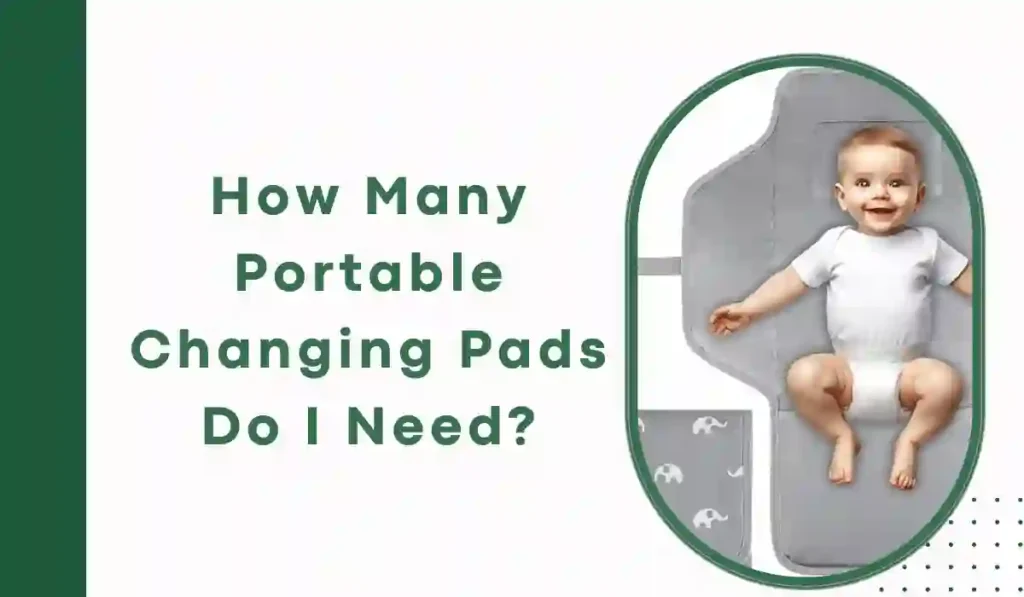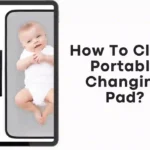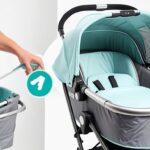As an Amazon Associate. I earn from qualifying purchases
Diaper changes are one of the most frequent activities new parents face. They quickly learn that these changes don’t just happen at home, but also on the go – sometimes, anywhere and everywhere. But when it comes to being prepared for a quick, clean, and comfortable diaper swap, portable changing pads are a non-negotiable accessory.
After all, these trusty mats can mean the difference between a smooth transition and a sticky situation, quite literally. In this comprehensive guide, we’ll address the pressing question of how many portable changing pads new parents really need, ensuring that you’re ready for any public (or private) diaper change challenge.

The Benefits of Portable Changing Pads
A Clean Barrier Between Baby and the World
One of the key benefits of portable changing pads is the protection they offer from unclean surfaces. Whether it’s in a bustling airport, a park’s public restroom, or the cramped confines of your car, a portable changing pad provides a clean space for your baby.
Convenience, Even in the Tightest Spaces
Changing a diaper in a small area can be a tricky task. Portable pads, often foldable, allow you to create an optimal space for your baby’s comfort. Their small size also helps to ensure they fit in any type of baby bag, no matter how mini.
How Many Portable Changing Pads Do You Need?
On average, a newborn needs about 10 to 12 diaper changes per day, which decreases as they grow older. Multiplying this by the number of portable changing pads you wish to have handy will give you an initial estimate.
Lifestyle Considerations
For parents who enjoy daily walks or have frequent short outings, more pads may be necessary. Conversely, homebodies might need fewer.
Travel and Destination Toilet Availability
The presence of public restrooms and how often you travel can also influence the number of pads you need. Longer travel times and destinations with scarce facilities may require more pads.
What Makes a Portable Changing Pad Special?
Size and Weight
The ideal pad is one with a balance of sufficient surface area for your baby and a compact, lightweight profile that doesn’t add unnecessary bulk to your diaper bag.
Materials and Durability
Waterproof and wipeable materials are a must for easy cleaning. Durable fabrics will ensure the pad holds up to regular use and repeated washing.
Convenience Features
Look for pads with pockets for wipes and diapers, as well as any other features that enhance convenience, like built-in toys or fastenings to secure the pad in place.
Best Practices for Using Portable Changing Pads
Keep Multiple Pads Clean and Ready
Having multiple pads allows you to rotate their use, ensuring each is properly cleaned and dried between uses. A reliable rotation system can make this process more manageable.
Proper Storage is Key
Store your pads in a designated section of your diaper bag or in a separate compartment to avoid cross-contamination with other baby essentials or items.
Conclusion
When it comes to portable changing pads, it’s always better to be prepared with more rather than fewer. With the benefits they provide and the various factors that can influence your need for them, it’s recommended to have at least two or three on hand. By considering your lifestyle, travel habits, and desired features, you can find the perfect balance of functionality and convenience in a portable changing pad.
FAQs
Can I reuse a disposable changing pad?
Disposable changing pads are designed for single-use only and should not be reused. It’s best to dispose of them after each diaper change.
Are there any safety concerns with using portable changing pads?
As with any baby product, it’s important to use caution and follow the manufacturer’s instructions. Make sure the pad is properly secured and never leave your child unattended during a diaper change. Also, be aware of any potential choking hazards such as small toys or fastenings on the pad.










